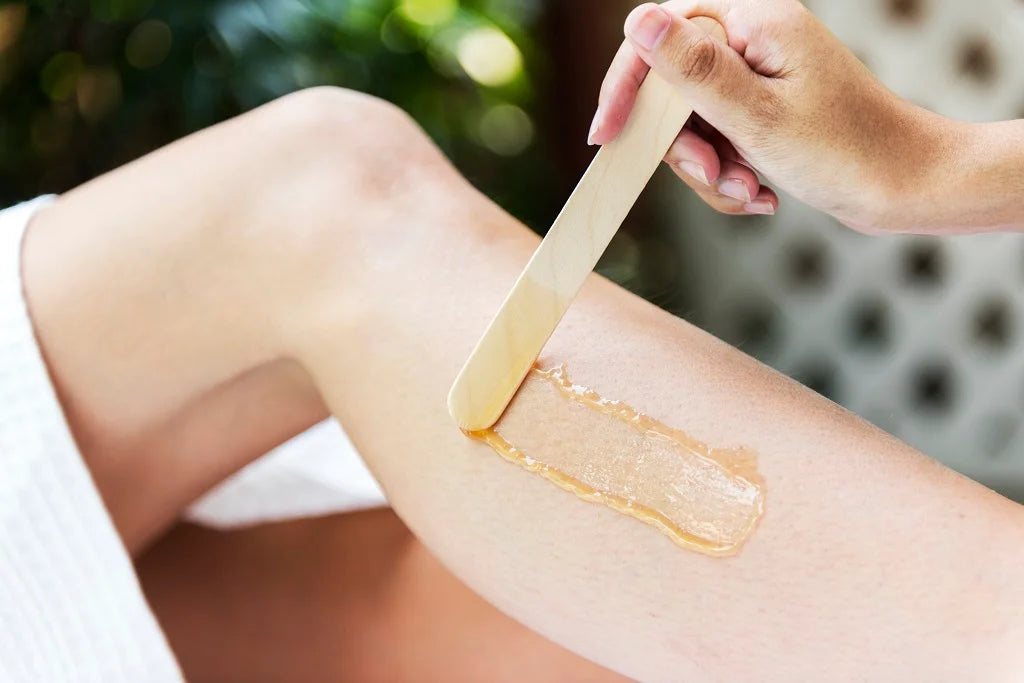
Do' And Don'ts Of Post Waxing Care

Dr. Deepthi Prasad, MBBS.
Written by Our Editorial Team
Table of Contents
Listen to the blog
Nothing can replace the joy of reading, right? Read the blog here.
Have you ever regretted getting a wax after facing issues like bumps, irritation, red spots and ingrown hair? If yes, then you are not alone. Say bye to these issues with post waxing care.
Before waxing, you prep your skin, exfoliate it gently and pamper with attention. But the process doesn't end once the waxing is over. Waxing alone does not guarantee flawless skin, it can make your skin look very sensitive due to the hair pulling process. So if you are dreaming of flawless post wax skin then you need to read this blog.
Post Waxing Care
Skin is an important part of your body and requires constant care. Your skin's health not only affects your physical well being but also makes you feel less confident. When your skin is healthy and flawless, it naturally makes you feel alot better and secure.
You must have noticed that after waxing, your skin becomes very sensitive for at least two or three days. Waxing can cause bleeding, tiny bumps, irritation, itching etc, making your skin look less beautiful. It not only pulls out your hair but also removes the topmost layer of the skin, resulting in open pores. During this crucial time span your skin requires extra care. So in order to help your skin recover from the hair pulling process and restore its health, post waxing care is important.
Also Read : Is Waxing Your Body Doing More Harm Than Good?
What Are The Do’s Of Post-Waxing Care?

Source : Shutterstock
Some ways to heal your skin from all the damages caused by waxing:
1.Cold Compression Against The Skin
Applying something cold to your freshly waxed skin will ease inflammation, redness etc.
2. What To Wear
Try to avoid wearing tight clothes as they will create friction and irritation. Wear baggy clothes for a few days after wax, to let your skin breathe.
3. Use Post Wax Lotions And Oils
They are used to remove the leftover wax on your skin, provide moisture to keep your skin hydrated and prevent the formation of bumps and ingrown hair.
4. Exfoliate Your Skin Post-Wax
Exfoliate your skin after 2-3 days. This allows the skin to heal from the waxing and reduces the risk of irritation. Exfoliation removes the ingrown hair and keeps your pores happy.
We recommend ThriveCo's Bumps Eraser Exfoliating Scrub, a gentle and effective scrub designed to address the skin issues associated with waxing. It contains three active ingredients - Glycolic acid, Lactic Acid, and Propylparaben, with exfoliating properties that help in removing dead cells, and make the skin look young and healthy.
Buy ThriveCo's Bumps Eraser Exfoliating Scrub
Strict Don’ts Of Post-Waxing Care!

Source : Shutterstock
Some no-no's during post waxing span are:
1.Avoid Taking Hot Baths
Do not take a hot shower right after waxing. It can cause irritation as your skin is very sensitive.
2. Avoid Activities That Make You Sweat
Avoid doing any intensive activity that can lead to excessive sweating, as it can cause infection. For example: hitting the gym, running etc.
3. Stay Away From The Sun
Do not go out in direct sunlight as your skin is more prone to UV rays after waxing.
4. Do Not Touch Or Pick Ingrown Hair
Do not touch your ingrown hair, leave them for 2-3 days and then exfoliate. Touching and picking ingrown hair can lead to infection. We don't want that now, do we?
Waxing is a regular part of life and if you don't want to regret every time you wax, commit to post wax care. It is a journey to achieving healthier skin and empowering oneself.
About Doctor :

Dr. Deepthi Prasad specializes in Dermatology, Cosmetology, and Aesthetic Dermatology and has been practicing for over 15 years. After completing MBBS from Dr. NTR University of Health Sciences Andhra Pradesh in 2009, she earned a MD in Dermatology, Venereology & Leprosy from Osmania Medical College in Hyderabad in 2014.
Disclaimer: All the content published on www.thriveco.in is solely for information purposes. It is not a substitute for professional medical advice, diagnosis, or treatment. Always consider seeking the advice of your physician or a qualified healthcare provider. The information, suggestion, or remedies mentioned on this site are provided without warranty of any kind, whether express or implied.
 PAYDAY SALE: Extra 15% off on all orders. Code: PAYDAY
PAYDAY SALE: Extra 15% off on all orders. Code: PAYDAY






